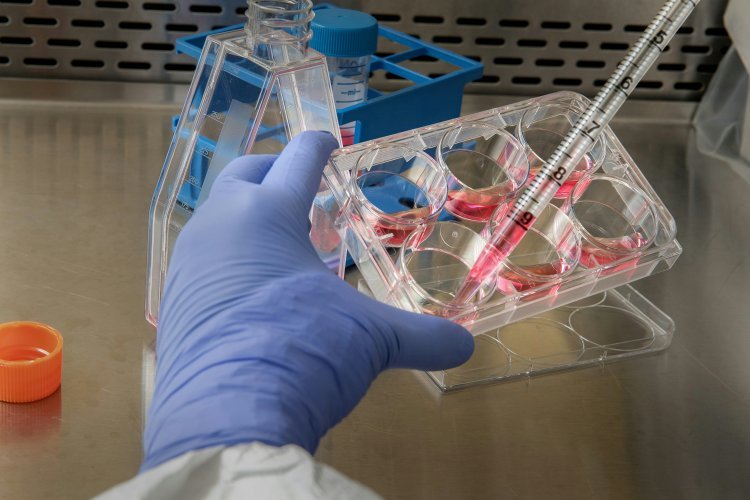Single-cell Enzyme Assay: Unlocking the Secrets of Cellular Function
In the world of biology and biochemistry, understanding the intricate workings of individual cells is crucial for unraveling the mysteries of life.

In the world of biology and biochemistry, understanding the intricate workings of individual cells is crucial for unraveling the mysteries of life. One powerful tool that has revolutionized our ability to study cellular function is the single-cell enzyme assay. This technique allows scientists to measure the activity of enzymes within a single cell, providing valuable insights into cellular processes and their regulation. In this blog post, we will explore the principles behind single-cell enzyme assays, their applications, and the impact they have had on our understanding of cellular function.
Enzymes are proteins that catalyze biochemical reactions in living organisms. They play a vital role in various cellular processes, such as metabolism, DNA replication, and signal transduction. Traditionally, enzyme assays have been performed on a population of cells, providing an average measurement of enzyme activity. However, this approach overlooks the inherent heterogeneity within a cell population, potentially masking important variations in enzyme activity between individual cells.
Single-cell enzyme assays address this limitation by enabling the measurement of enzyme activity in individual cells. This technique involves isolating and manipulating single cells, followed by the quantification of enzyme activity using fluorescent or luminescent probes. By measuring enzyme activity at the single-cell level, researchers can uncover previously hidden variations in enzyme function and regulation.
One of the key advantages of single-cell enzyme assays is their ability to reveal cellular heterogeneity. Cells within a population can exhibit significant differences in enzyme activity, even if they are genetically identical. This heterogeneity can arise from various factors, such as cell cycle stage, cellular stress, or differentiation status. By measuring enzyme activity at the single-cell level, researchers can identify and characterize subpopulations of cells with distinct enzyme profiles. This information can provide valuable insights into cellular heterogeneity and its role in disease progression, drug response, and tissue development.
Single-cell enzyme assays have found numerous applications in both basic research and clinical settings. In basic research, these assays have been instrumental in studying cellular signaling pathways and understanding how enzymes contribute to cellular function. For example, researchers have used single-cell enzyme assays to investigate the role of kinases in cancer cells and to identify potential targets for therapeutic intervention. By measuring kinase activity at the single-cell level, researchers can gain a deeper understanding of the signaling networks that drive cancer progression and identify novel drug targets.
In the clinical setting, single-cell enzyme assays hold great promise for personalized medicine and diagnostics. By measuring enzyme activity in patient samples, clinicians can obtain valuable information about disease progression, treatment response, and prognosis. For example, single-cell enzyme assays have been used to monitor the activity of drug-metabolizing enzymes in cancer patients, allowing clinicians to optimize drug dosing and minimize side effects. Additionally, these assays have been employed to study the activity of enzymes involved in drug resistance, providing insights into mechanisms of treatment failure and guiding the development of new therapeutic strategies.
The development of single-cell enzyme assays has not been without challenges. Isolating and manipulating single cells can be technically demanding and time-consuming. Additionally, the sensitivity and specificity of the enzyme probes used in these assays need to be carefully optimized to ensure accurate measurements. However, advancements in microfluidics, imaging technologies, and probe design have greatly facilitated the implementation of single-cell enzyme assays, making them increasingly accessible to researchers and clinicians.
In conclusion, single-cell enzyme assays have revolutionized our ability to study cellular function at the individual cell level. By measuring enzyme activity in single cells, researchers can uncover hidden variations in enzyme function and regulation, providing valuable insights into cellular heterogeneity and its role in health and disease. These assays have found applications in basic research, clinical diagnostics, and personalized medicine, with the potential to transform our understanding and treatment of various diseases. As technology continues to advance, single-cell enzyme assays will undoubtedly play a pivotal role in unlocking the secrets of cellular function and paving the way for new discoveries in biology and medicine.
What's Your Reaction?











![Wireless Connectivity Software Market Size, Share | Statistics [2032]](https://handyclassified.com/uploads/images/202404/image_100x75_661f3be896033.jpg)




